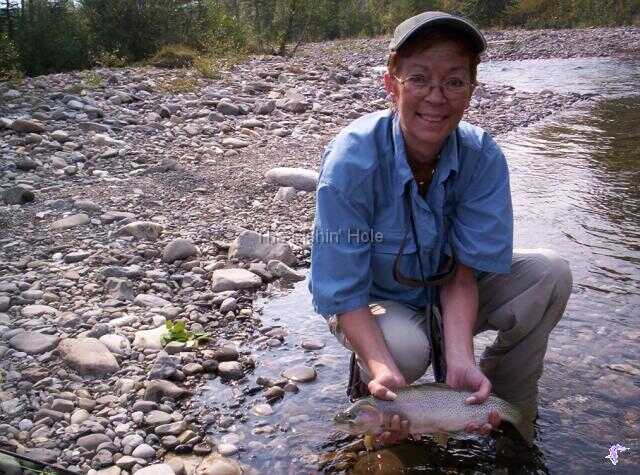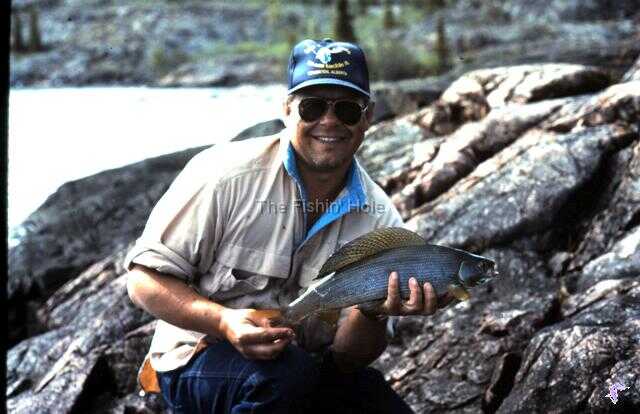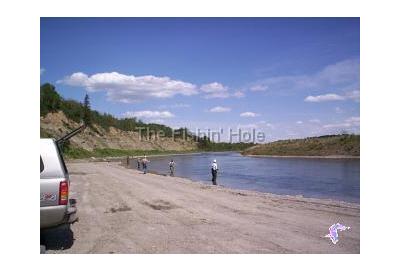When talking with customers I quite often hear that they would like to try fly fishing but their reason for not doing so is that it looks too hard, or it's too expensive, or it's too complicated. None of these needs to be a deterring factor today; there is no better time to get started in fly fishing than now. While it is true that getting outfitted for fly fishing used to be expensive and starter outfits were of questionable quality, this is no longer the case.
Today's beginner has access to high quality equipment at very reasonable prices with quality outfits including graphite rods, lifetime warranties, disc drag reels and matching fly lines with leaders attached in the $200.00 price range. Quality instruction is available via shops, books, DVD's and the internet. Almost anybody can learn to fly cast in a half day with proper instruction. Contrary to popular belief fly casting is not about strength but rather timing, letting the rod do the work. For this reason ladies always seem to be faster learners than men. Once a person learns the basic fly cast then the fun really begins. Fly fishing is a lifelong learning experience; every time an angler goes out they learn something new.


Fishing Tackle
The novice fly fisher would be well advised to take a course that provides equipment before making their purchase. The knowledge they gain in the course will help them make an educated decision on which rod length and weight will best suit their fishing situation. For instance, an angler that will be mainly fishing lakes for large fish will want different equipment than someone who will be fishing streams for smaller sized fish. If this is not possible make sure you do as much research as possible before making a purchase. The same goes for reels, lines and leaders.
Fly rods are designed to cast a certain weight of fly line. The higher the number of the rod, the heavier line it is designed to cast. The heavier rod/line weight has the advantage of being able to cast larger flies, cast in windy situations, and land larger fish quicker. The disadvantages are that they make more of a disturbance when they land on the water. Also being heavier they will tire the caster out quicker, and smaller fish will not put up as good of a fight on the heavier, stiffer rod. For most trout fishing situations either a 5 or six weight rod is normally the best choice. Most rods in these weights run between 8 to 10 feet long. A lot beginners seem a bit overwhelmed by this length of rod but in fly casting the rod is a lever, the longer the lever the easier it is to propel the line, leader and fly through the air. A longer rod also helps keep the fly line off the water, for this reason anglers fishing from a boat or float tube prefer to use a longer rod.
Fly Fishing Lines
There are so many choices in fly lines available these days that it's become confusing to even seasoned fly fishers which to choose. Specialty lines exist for every imaginable situation, fish species, water temperature and weather condition. This can all be very confusing to novice but needn't be. The beginner should start out with a decent quality floating line, other lines that sink or have a tip that sinks can be added as an angler gets more experience and encounters situations that call for them. With a floating line the angler can fish dry flies on the surface or get their flies to sink a little or a lot by adding split shot to the leader or by fishing weighted flies. A good quality line makes casting much easier, and is probably the second most important thing a novice angler should spend his money on, after a good quality rod.
Fly Fishing Reels
The major difference between fly reels and spinning reels is that fly reels for the most part are what is known as single action. That is, if the angler is turning the handle the line is being retrieved, there is no drag that allows the line to go out when the handle is being turned. The drag found on fly reels only controls how fast and under how much pressure the lines gets pulled off the reel when the handle is released. This pressure prevents the reel from back lashing when a fish runs and then stops, it also helps tire the fish as he is pulling against the drag. Because of this the angler has to be paying attention to what the fish is doing, letting him run when he wants and reeling in line when the opportunity allows. Modern day fly reels can be easily switched from right hand retrieve to left hand retrieve, so the angler can reel with which ever hand is most comfortable. Most also have spare spools available so that when an angler gets another fly line, say a sinking line, they don't have to purchase a whole new reel, just a spool, which is usually about half the cost of a new reel.
Leaders and Tippets
Leaders are simply a tapered piece of monofilament that makes an invisible connection between the fly line and the fly.The leader will have a heavy butt end that attaches to the fly line and then tapers down over its length to where it is tied to the fly. Leader lengths range from 7 feet to 15 feet or longer, clearer water and spookier fish dictate how far from the end of your fly line your fly is landing. For most stream situations a 9 foot leader is used whereas lake fishermen prefer longer leaders in the 12 - 20 foot range. Tippet is quite simply a level piece of monofilament that is added to the fly end of the leader. It must be the same diameter or smaller than the tip of the leader. The tippet serves two purposes; it allows you to lengthen the leader and also replaces the leader material you lose when you change flies so that you are not using up your leader as quickly.
Flies
One of the hardest things for a new fly fisher to learn with the large number of fly patterns available is what insect they represent, when to use, and how to fish them. Fortunately there is a great deal of information out there on flies. Books have hatch charts that provide details on when insects hatch and what fly patterns are appropriate. Speciality stores have fishing reports that advise the angler not only where fishing has been good but also what patterns have been working. One of the best ways to build up your fly collection is to purchase flies that are working for you as the season progresses, making notes if necessary. Try to avoid using the last of a fly pattern if it has been successful as it can be tough to remember exactly what it looked like the next time you shopping or flies.


Other Stuff
Once the new fly fisher has acquired the basics they will find an almost limitless supply of accessories available. Some are essential while others are not necessary but are but are useful none the less. The essentials would include fly floatant, fly boxes, forceps, clippers and polarized sunglasses. Other items can be added as time goes on, waders, vest, tippet holders, threaders and on and on. Once you have acquired the fly fishing bug, your friends and relatives should have no problem with birthday gift ideas for years to come.
Fish
Fly fishing used to be for trout alone, thus deterring many anglers from taking up the sport. Now days fly angler's fish for every species imaginable, fresh water or saltwater, big fish or small, almost all available species can be taken on the fly rod, usually with just minor changes to tackle. Pike, walleye, whitefish, catfish, gar and many other species are not only being caught on flies but are having magazine articles written on them to help other anglers do the same. Many fly fishers are making a winter get away to Belize or Cuba to fly fish for bonefish, permit and tarpon. In British Columbia fly fishing for Coho salmon has become very popular.


In northern areas Arctic Grayling are a great fish to target with the fly rod. They rise readily to the fly and a very forgiving of mistakes making tem a great fish for the novice fly angler to hone their skills. So no more excuses, this year give fly fishing a try, take a course, bug a friend to show you how, join a club that has fly fishers in the membership, just get out there and do it. You'll be glad you did.




